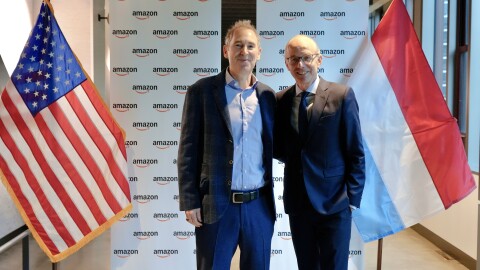Don’t you hate it when a shop has run out of something you need? The last-minute toy for a birthday party, your favorite breakfast cereal, or shoes in your size? Shop owners hate that, too, because they can’t provide you what you want, and risk losing the sale. So how do they avoid disappointing you? Data.
For as long as there have been stores, retailers have studied what their customers purchase. Things like what sells well and when, what customers ask and are looking for, which brands are on the rise, and what advertising and promotions get customers in the door. Store owners know all of this and more by paying attention to their customers; store loyalty cards are just one example of how traditional brick and mortar stores keep track of their customers’ shopping habits. This knowledge lets them offer the products you want when you want them. Just like other stores, we use information to feature the products customers want, help customers find great products, and make sure we have enough inventory.
Key to how our Amazon store works is the combination of products offered side by side from both Amazon, and also third-party sellers. This combination is designed to give customers the best experience, with better product selection, availability and choice than would be possible otherwise. We use data from the store to make sure we are meeting customers' needs, and also provide sellers with data from their sales so they can make decisions about how to grow their businesses.
To help achieve this, Amazon has invested tens of billions in infrastructure and built hundreds of tools to help third-party sellers succeed in our store—including data analytics to help third-party sellers to better understand and reach customers.
By providing third-party sellers with inventory and pricing tools and recommendations to help them manage and grow sales we help them build their success. In Europe, we work with more than 900,000 independent partners, including third-party sellers, developers, content creators, authors, and delivery providers. In 2020 alone, we have spent approximately €2.8 billion on logistics, tools, services, programs, and employees to help small and medium businesses selling on Amazon succeed.
We have launched over 250 new tools for sellers which have contributed significantly to sellers’ success and sales optimization. These include business reports and insights tools such as the “Listing Quality”, “Best Sellers,” “Most Wished For,” “Hot New Releases,” and “Most Gifted”.
Alongside these, Brand Analytics reports provide Sellers with access to detailed information such as search frequency rankings (which looks at the popularity of keywords), top clicked products, click shares, and conversion shares (the percentage of total sales received by products for a given keyword).
These tools can be accessed through Seller Central, a custom-built portal for sellers. Here sellers can create new listings, manage inventory and orders, access product-level pricing information and manage their pricing, obtain information on the performance of their products, and communicate with customers.
We show a sales rank for every single product on its page, and have published lists of best sellers for all the world to see. This transparency is part of what makes Amazon a great place to launch or grow a brand.
We believe we provide third-party sellers and brands with more data about their performance and sales than any other store. It is one of the reasons third-party sellers have been so successful in the Amazon store. But, we recognize third-party sellers and brands also have many other sources of data including insights into the world of shopping that happens outside our store.
Just like our third-party sellers and other retailers across the world, Amazon also uses data to run our business. We use aggregated data about customers’ experience across the store to continuously improve it for everyone, such as by ensuring that the store has popular items in stock, customers are finding the products they want to purchase, or connecting customers to great new products through automated merchandising.
Our continued success depends on providing a great experience – not only for our customers who benefit from wider selection and increased competition that helps keep prices low—but also for third-party sellers, which means protecting their proprietary information while providing the data and tools they need to grow their businesses.
Read more about how we help selling partners thrive on Amazon Business.












